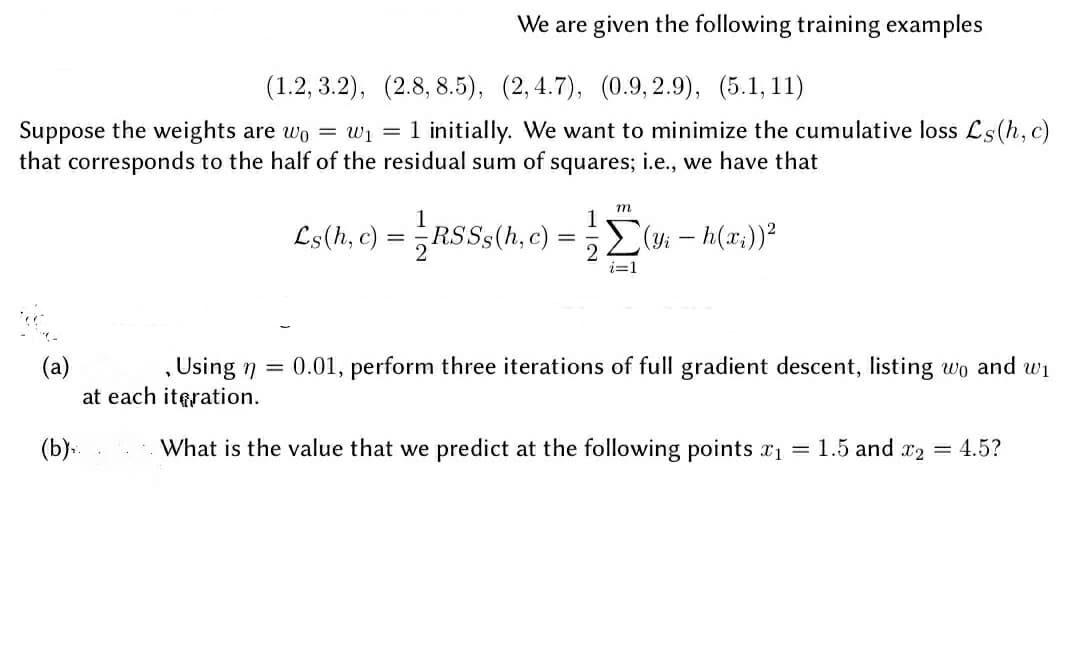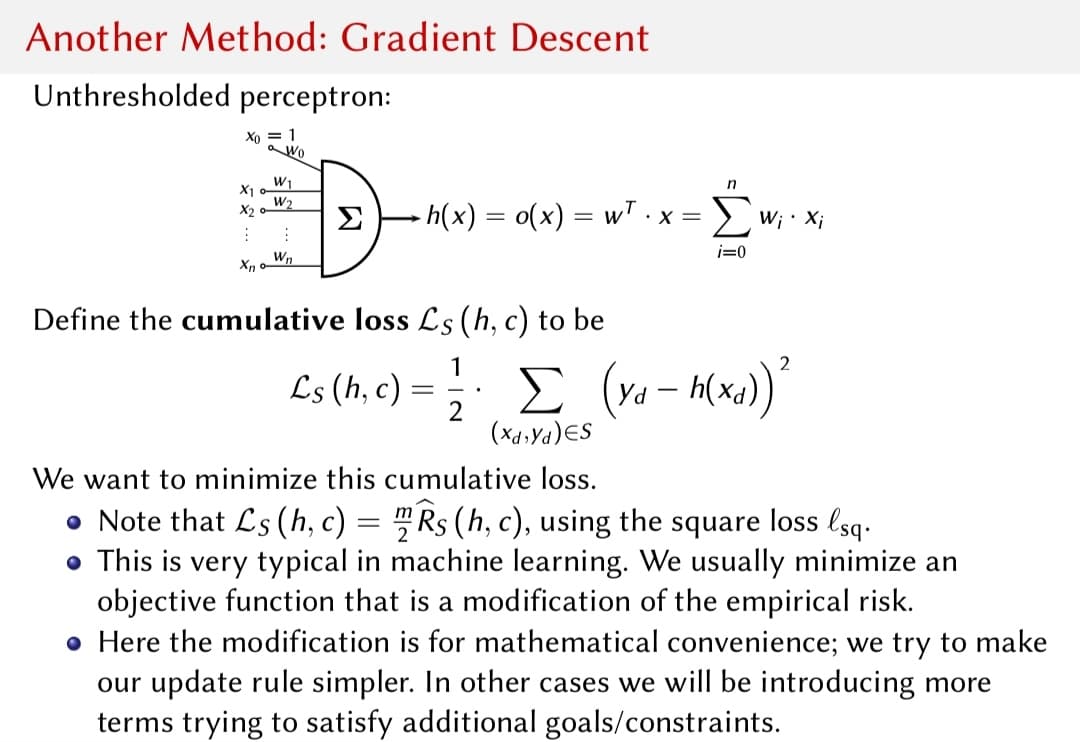We are given the following training examples (1.2, 3.2), (2.8, 8.5), (2,4.7), (0.9, 2.9), (5.1,11) Suppose the weights are wo = wi = 1 initially. We want to minimize the cumulative loss Ls(h, c) that corresponds to the half of the residual sum of squares; i.e., we have that m 1 Ls(h, c) = RSSs(h, c) E(yi – h(x;))? i=1 0.01, perform three iterations of full gradient descent, listing wo and wi (a) at each itgration. , Using 7 = (b). What is the value that we predict at the following points r1 = 1.5 and r2 = 4.5?
We are given the following training examples (1.2, 3.2), (2.8, 8.5), (2,4.7), (0.9, 2.9), (5.1,11) Suppose the weights are wo = wi = 1 initially. We want to minimize the cumulative loss Ls(h, c) that corresponds to the half of the residual sum of squares; i.e., we have that m 1 Ls(h, c) = RSSs(h, c) E(yi – h(x;))? i=1 0.01, perform three iterations of full gradient descent, listing wo and wi (a) at each itgration. , Using 7 = (b). What is the value that we predict at the following points r1 = 1.5 and r2 = 4.5?
Glencoe Algebra 1, Student Edition, 9780079039897, 0079039898, 2018
18th Edition
ISBN:9780079039897
Author:Carter
Publisher:Carter
Chapter10: Statistics
Section10.1: Measures Of Center
Problem 9PPS
Related questions
Question
100%

Transcribed Image Text:We are given the following training examples
(1.2, 3.2), (2.8, 8.5), (2,4.7), (0.9, 2.9), (5.1, 11)
Suppose the weights are wo = wi
that corresponds to the half of the residual sum of squares; i.e., we have that
= 1 initially. We want to minimize the cumulative loss Ls(h, c)
m
1
RSSS(h, c)
1
Ls(h, c) =
E(yi – h(x;))?
i=1
, Using n = 0.01, perform three iterations of full gradient descent, listing wo and wi
(a)
at each iteration.
(b).
What is the value that we predict at the following points x1 = 1.5 and x2
4.5?

Transcribed Image Text:Another Method: Gradient Descent
Unthresholded perceptron:
Xo = 1
a Wo
W1
X1
W2
n
h(x) = o(x) = wT.x= ) w; · x;
X2
Σ
i=0
Wn
Define the cumulative loss Ls (h, c) to be
1
Ls (h, c) =
Yd
(X4.Ya)ES
We want to minimize this cumulative loss.
• Note that Ls (h, c) = "Rs (h, c), using the square loss lsq.
• This is very typical in machine learning. We usually minimize an
objective function that is a modification of the empirical risk.
• Here the modification is for mathematical convenience; we try to make
our update rule simpler. In other cases we will be introducing more
terms trying to satisfy additional goals/constraints.
Expert Solution
This question has been solved!
Explore an expertly crafted, step-by-step solution for a thorough understanding of key concepts.
This is a popular solution!
Trending now
This is a popular solution!
Step by step
Solved in 2 steps with 2 images

Recommended textbooks for you

Glencoe Algebra 1, Student Edition, 9780079039897…
Algebra
ISBN:
9780079039897
Author:
Carter
Publisher:
McGraw Hill

Glencoe Algebra 1, Student Edition, 9780079039897…
Algebra
ISBN:
9780079039897
Author:
Carter
Publisher:
McGraw Hill